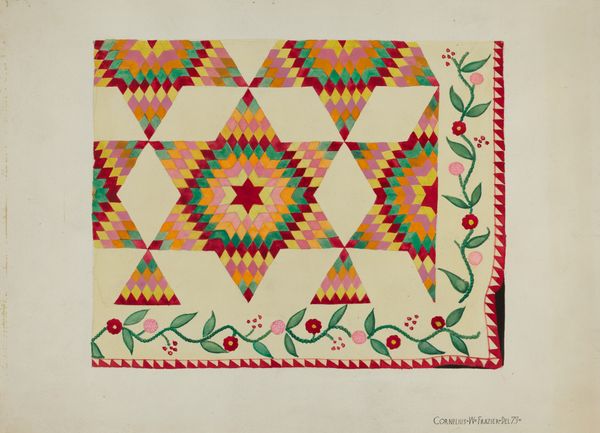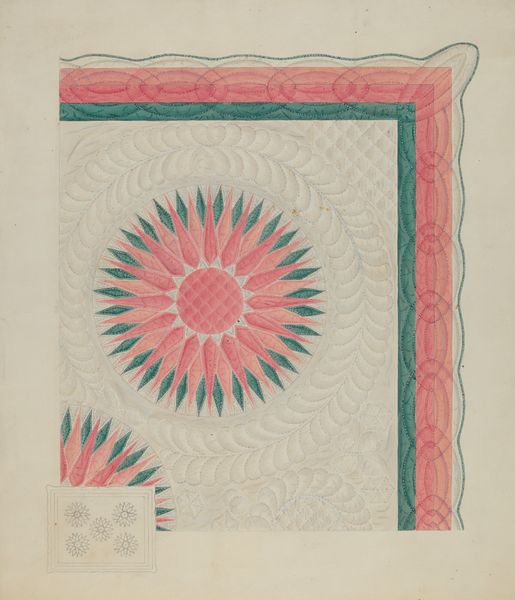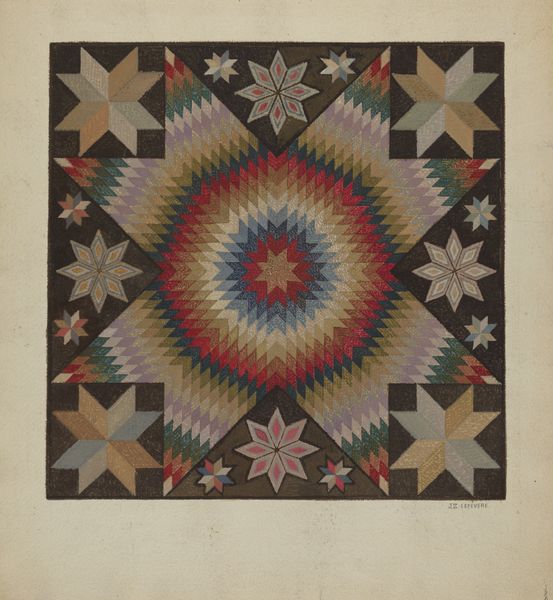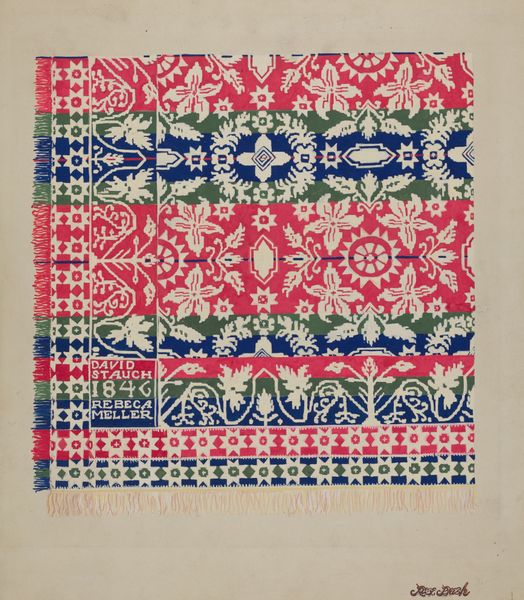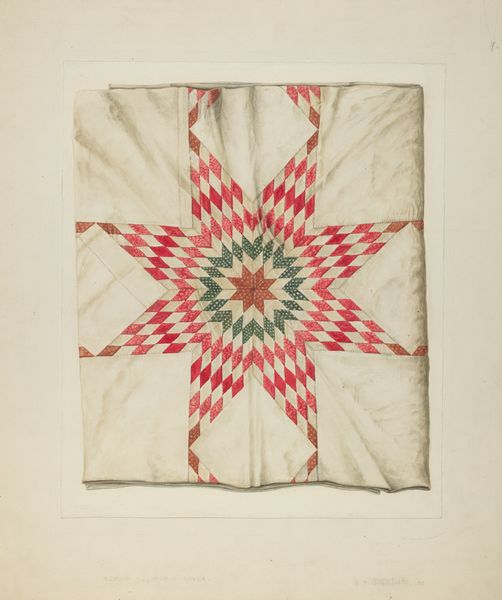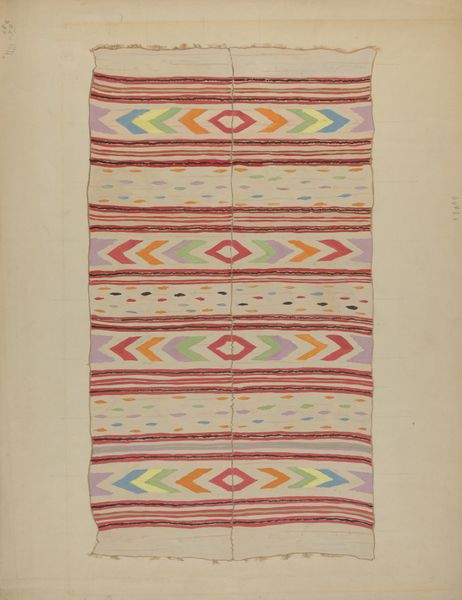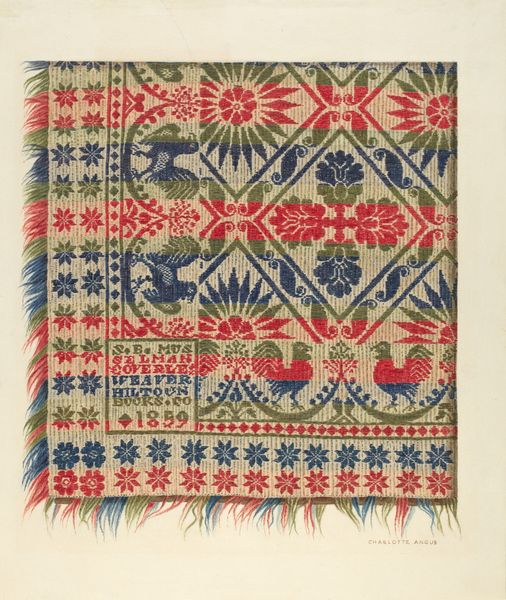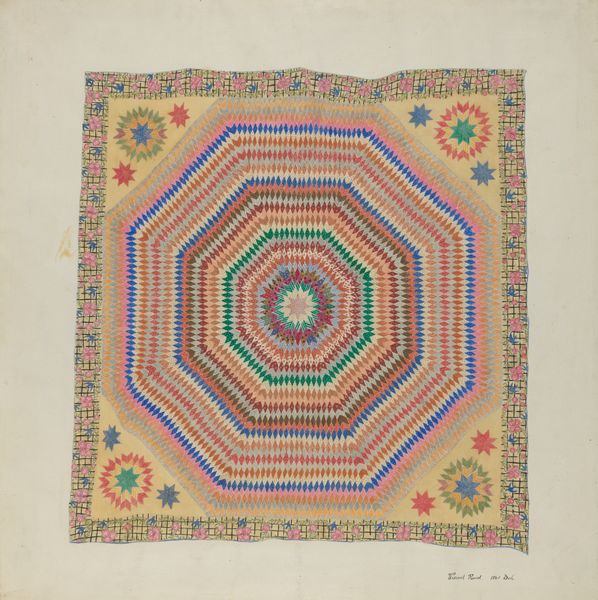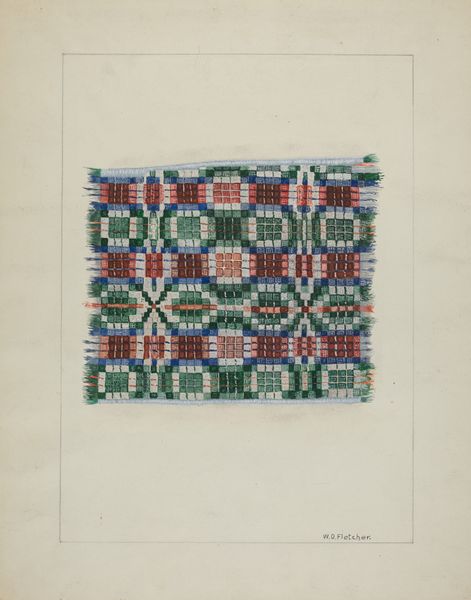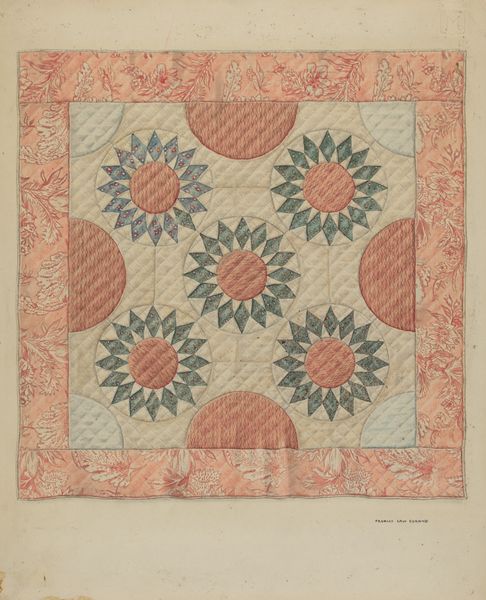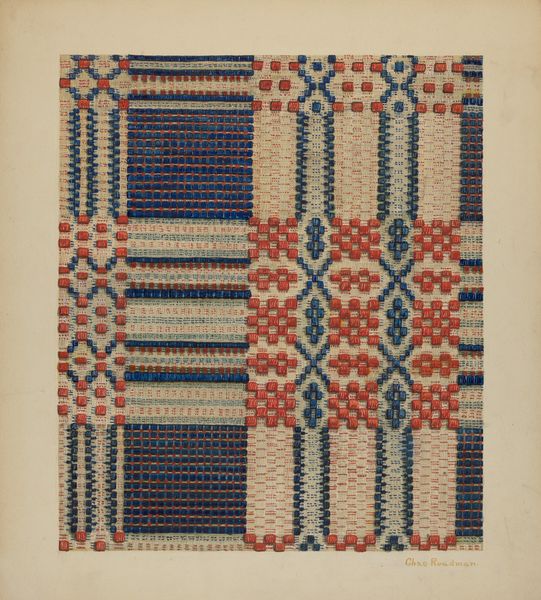
drawing, mixed-media, textile
#
drawing
#
natural stone pattern
#
mixed-media
#
decorative element
#
textile
#
geometric pattern
#
tile art
#
folk-art
#
geometric
#
repetition of pattern
#
vertical pattern
#
pattern repetition
#
decorative-art
#
imprinted textile
#
layered pattern
#
decorative art
Dimensions: overall: 26.3 x 35.7 cm (10 3/8 x 14 1/16 in.) Original IAD Object: 84" wide; 96" long
Copyright: National Gallery of Art: CC0 1.0
Editor: This is a mixed-media piece from around 1936, a drawing of a "Quilted Applique Coverlet" by Edward L. Loper. The bright colors and geometric patterns give it a very vibrant and optimistic feel. How would you interpret this work within its historical context? Curator: This coverlet design offers a compelling intersectional lens through which we can examine early 20th-century American identity and culture. Think about the tradition of quilting, particularly among women in rural communities. Quilting often served as both a practical necessity and a creative outlet, but also as a form of social commentary. Do you think the geometric starburst and floral patterns hold any specific symbolism reflecting gender, labor, or social status? Editor: That’s a fascinating point! The starburst certainly grabs your attention, almost like a symbol of aspiration, while the floral elements seem more traditionally feminine. Maybe it speaks to the complex roles women held. Curator: Precisely. And consider the context of the Great Depression when this was made. The repurposing of materials and emphasis on resourcefulness inherent in quilting practices resonates with survival strategies adopted during that time. What do you observe about the medium – a drawing rather than an actual textile? How does it impact the message? Editor: I hadn't thought about it that way. Presenting it as a drawing perhaps elevates the craft. Curator: Indeed. By depicting this potential quilt, Loper invites viewers to contemplate not only the functionality of the quilt, but also the rich heritage and artistry woven into its fabric. It blurs the boundaries between “high” art and domestic craft, sparking conversations about value, labor, and the narratives embedded within everyday objects. Editor: I now see it less as just a pretty pattern, and more as a document of its time and of women’s work and lives. Curator: Exactly! And that is the power of art – it encourages us to continually re-evaluate history and consider perspectives beyond our own.
Comments
No comments
Be the first to comment and join the conversation on the ultimate creative platform.
